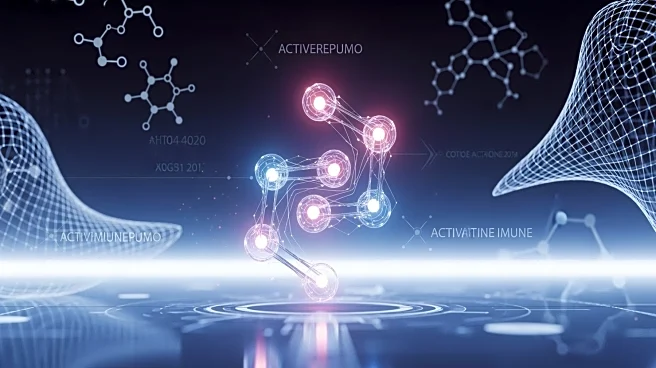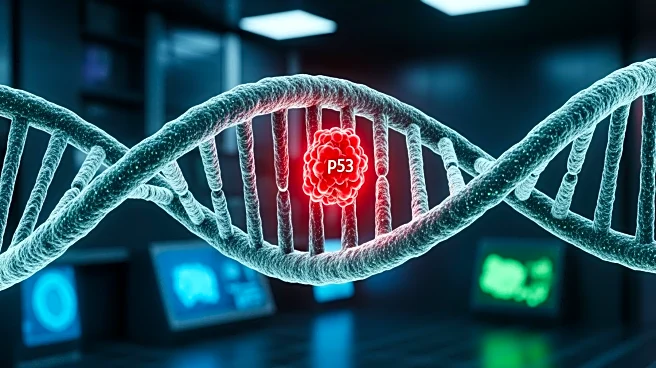What's Happening?
MIT researchers have discovered a method to stimulate cancer cells to produce an enzyme that activates the cGAS-STING signaling pathway in nearby immune cells, potentially leading to tumor destruction.
The approach involves using lipid nanoparticles to deliver cyclic GMP-AMP synthase (cGAS) mRNA to cancer cells, resulting in the production of the STING agonist cGAMP. This molecule is then released and transferred to neighboring immune cells, triggering immune responses. Studies in mouse cancer models showed that this method, when combined with existing immune checkpoint blockade immunotherapy, enhances antitumor immunity and controls tumor growth. The strategy aims to avoid the side effects associated with large doses of STING activators and could be developed for patient treatment.
Why It's Important?
This development is significant as it offers a potential new avenue for cancer treatment by harnessing the tumor's own machinery to produce immune-stimulating molecules, thereby creating a powerful antitumor response. The approach could lead to safer and more effective cancer immunotherapies by reducing the toxicity associated with direct STING agonist delivery. By increasing cGAS levels inside cancer cells, the delivery efficiency is enhanced compared to targeting immune cells in the tumor microenvironment. This strategy not only strengthens antitumor immunity but also reduces the risk of harmful side effects, bringing researchers closer to developing viable cancer treatments.
What's Next?
The researchers plan to adapt the delivery system for systemic injection rather than direct tumor injection. They also intend to test the mRNA therapy in combination with chemotherapy drugs or radiotherapy that damage DNA, potentially increasing the therapy's effectiveness. This combination could provide more double-stranded DNA to activate the synthesis of cGAMP, further enhancing the immune response against cancer cells.
Beyond the Headlines
The approach of using endogenous processes that the body already has, and utilizing them in a different context, reflects a philosophy of science that leverages evolutionary mechanisms. This method of supercharging natural processes could lead to broader applications in cancer treatment and other therapeutic areas.











